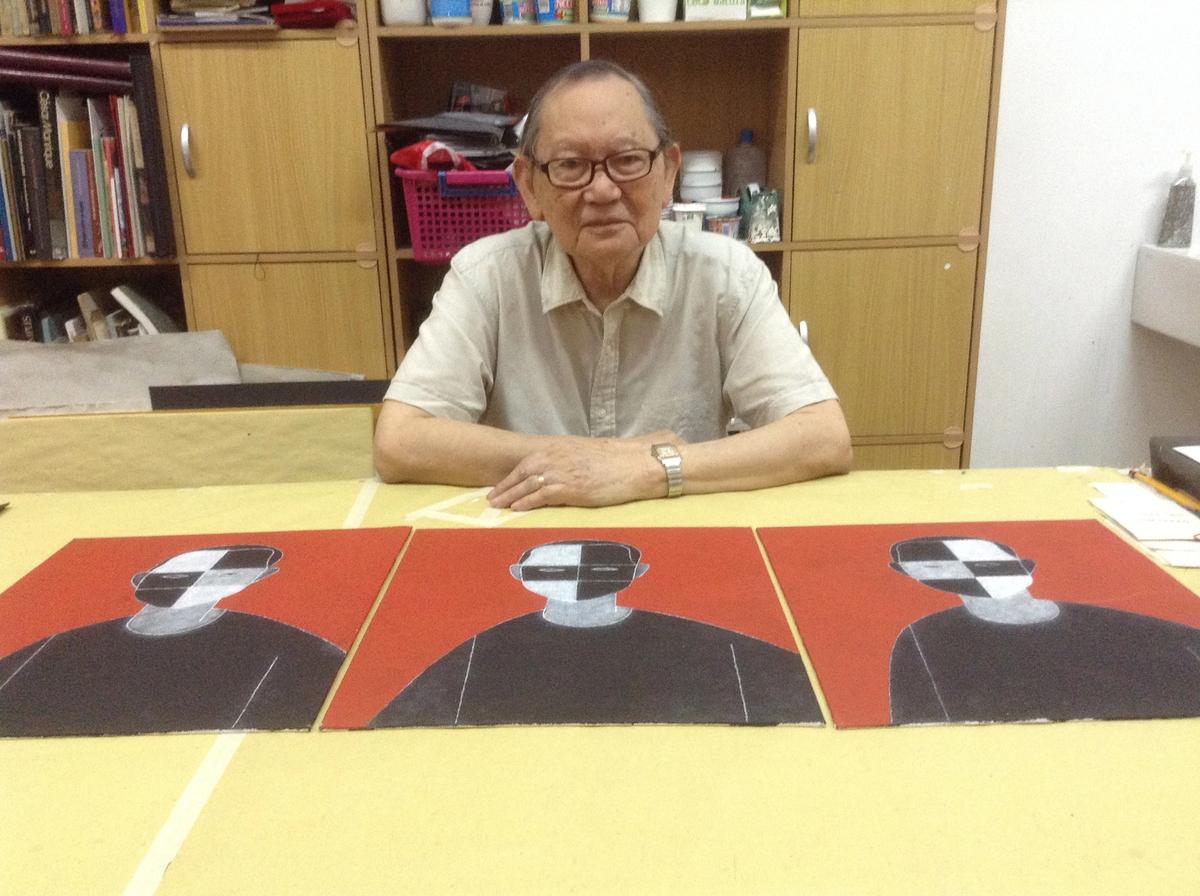Arturo Luz, one of Asia’s most influential modernists, died on 26 May, in Manila, aged 94. An artist, curator and museum director, for decades Luz was a pivotal force in culture for the Philippines and the surrounding region. “We will miss Mr. Luz whose presence has loomed large in shaping Philippine modern art,” the National Museum of the Philippines says in a statement.
Born to a family of industrialists, Luz received his first degree in Fine Arts at the University of Santo Tomas in Manila. He then studied at the California College of Arts and Crafts in Oakland, the Art School of the Brooklyn Museum in New York, and at the Académie Grade Chaumière in Paris. He returned to live the Philippines in the early 1950s, though he frequently traveled abroad, moving to Rome for several months at one point.
A key figure in Filipino neo-realism, Luz was best known as an artist who liked to use spare lines and dramatic compositions in his practice that included painting, collage, printmaking, sculpture and photography. In 1997, the Philippine government designated him a National Artist, the country’s most prestigious cultural accolade.
When Luz's works occasionally come up for sale today, they continue to be some of the most sought-after in the Philippine art market and at auctions. He exhibited internationally, including at the 1962 International Art Salon in Saigon, the 1971 Sao Paulo Biennial, the 1974 Tokyo International Print Biennial, and the 1984 British International Print Biennale.
As an art administrator and curator from the 1960s onwards, he championed a modernist visual language in sharp contrast to prevailing fashions favouring classic European painting and sculpture. For the 1974 opening of New York’s Philippine Center—a Fifth Avenue building that continues to house the country’s trade, tourism and culture missions—Luz was tasked by the then-First Lady of the Philippines, Imelda Marcos, to assemble a collection of contemporary works by 52 prominent Philippine artists. They included works by BenCab, Jose Joya, and himself.
Some 115 pieces from that collection recently returned to Manila for the first time. They are the subject of The Homecoming Exhibition of the Philippine Center New York Core Collection of 1974, a major show that opened in March at the National Museum of Fine Arts. In-person access to the exhibition has been very limited due to the government’s pandemic safety regulations, but the show is scheduled to run until February 2022.
From 1976 to 1986, Luz served as the director of the Metropolitan Museum of Manila, a public institution that he started with the backing of Imelda Marcos. As he envisioned it, the museum’s mission was to showcase local and foreign contemporary art, one of the first such government-sponsored spaces in Asia.
Luz was at the helm of the museum in 1982 when it presented the Contemporary Hong Kong Art Exhibition, one of the first large survey shows of “new” art from Hong Kong. It featured painters and sculptors including Luis Chan, Cheung Yee, Irene Chou, Liu Kuo-Sung and Antonio Mak, now recognised as important personalities in Chinese contemporary art history. At the time, such aesthetics had a limited audience among art lovers in Hong Kong and Taiwan.
Luz also served as the founding director of the Design Center of the Philippines, and the now-closed Museum of Philippine Art. In addition, he collaborated extensively on public art and building projects with Leandro Locsin, a Filipino pioneer in tropical Brutalist architecture.
From 1960 to 2002, his wife Tessie, who passed away in 2019, operated the Luz Gallery, arguably the first professionally run commercial gallery in the Philippines, promoting contemporary art.
Luz's death was preceded by many years of illness. His daughter Angela announced his passing via social media, saying: "He enriched our lives with his art, with his incredible talent and his genius... His legacy will live on."


